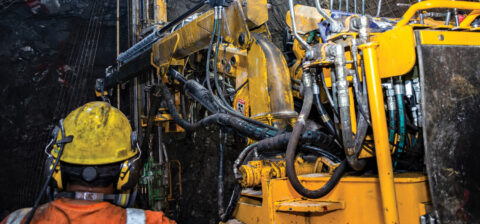Safety and Security
Health And Safety First
Regulatory change is one of the biggest challenges for companies, and with the declaration of the coronavirus as a national disaster, the role of employers and their obligations to workers is going to be increasingly scrutinised in the months to come.
So how should you be staying on top of compliance, both in these challenging times and in general?
Section 8 of the Occupational Health and Safety Act of 1993 (OHSA) requires the employer to have and maintain – as far as reasonably possible – a working environment that is safe and without risk to the health of the employees.
For employers to ensure they are complying with South African labour laws at this time, it’s vital to ensure they are implementing the rules and regulations of the OHSA. Following it to the letter will help to avoid claims by employees and costly penalties imposed on the employer in the future.
Keeping up with health and safety compliance is not a matter of choice, says Basetsana Magano, an independent HR consultant and MD of Phetogo Consulting. “Employers have to ensure that employees have a safe environment to work in by staying up to date with compliance regulations and documentation.
“A good health and safety compliance programme is absolutely essential, enabling you to identify the risks to your organisation and to design and implement the appropriate controls.”
A detailed compliance programme helps to prevent poor conduct, ensures proper governance minimises risk, maintains the company’s reputation, and provides employees with a much better working environment.
It’s also important to create a strategy for staying informed. Whenever a new regulation appears, regulatory bodies publish up-to-date information on how the rules apply to your business, the requirements and the deadlines.
But you could find yourself monitoring hundreds of regulatory entities and publications – this is why a clear strategy and a strong compliance team are necessary.
“To ensure proper compliance and in the spirit of stakeholder engagement, it is also advisable that companies form a committee or appoint change champions to ensure dissemination of information and to hold the company and employees accountable for ensuring that there is absolute compliance,” Magano says.
On 17 March, for example, the Department of Labour released guidelines for dealing with COVID-19 at workplaces. In dealing with the pandemic, a combination of controls is required, although the main principle is to follow the hierarchy of controls. The department said current risk assessments need to be reviewed and updated, taking into account the new hazards posed by exposure to COVID-19 in the workplace.
“Fortunately, the government is doing a good job in being transparent at keeping citizens updated,” says Magano. “Companies need to use all available platforms to communicate information to employees regularly. The virus is aggressive, therefore, a weekly newsletter is not enough.”
Keeping risk assessments up to date
The department has advised employers to “go back to basics” by conducting a hazard identification and risk assessment to determine the level of risk exposure and communicate to all workers.
A Health and Safety Compliance Certificate is valid for a year. As the coronavirus outbreak has shown, a year is a long time and new hazards may crop up at any time. That’s why it’s vital to conduct annual assessments.






 Sign-up and receive the Business Media MAGS newsletter OR SA Mining newsletter straight to your inbox.
Sign-up and receive the Business Media MAGS newsletter OR SA Mining newsletter straight to your inbox.